Hutchinson tires are synonymous with on- and off-road racing. The French company hopes the new Hutchinson Blackbird will be the same for road racing performance. Their tubulars were the choice of many prolific world tour teams (USPS to name one), and they developed the modern road tubeless concept in 2006.
Hutchinson Blackbird tubeless road racing tire
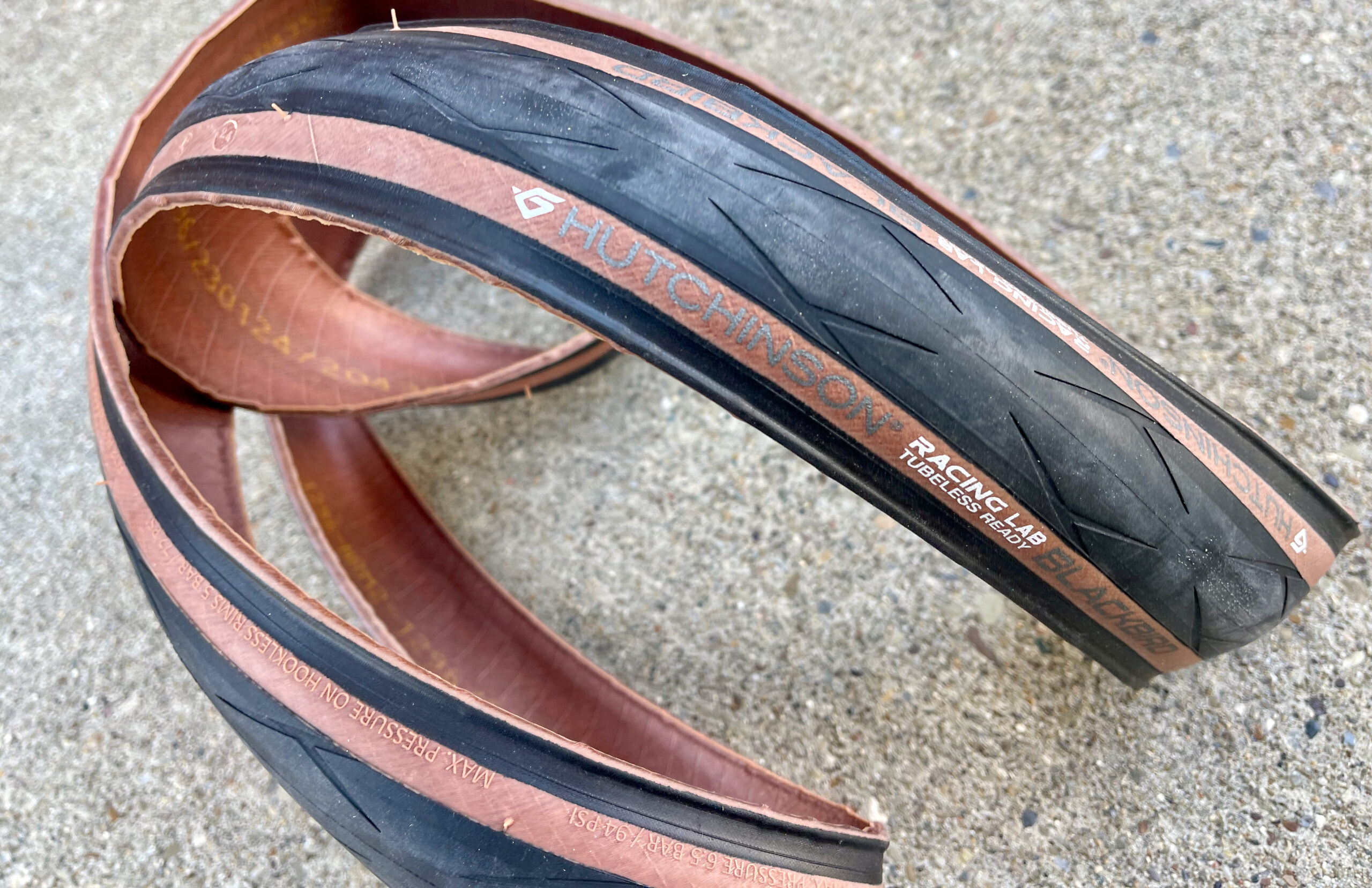
Now, the tubeless pioneers are introducing an all-new race-performance tire to their road line, just in time for their Paris 2024 Olympic aspirations.
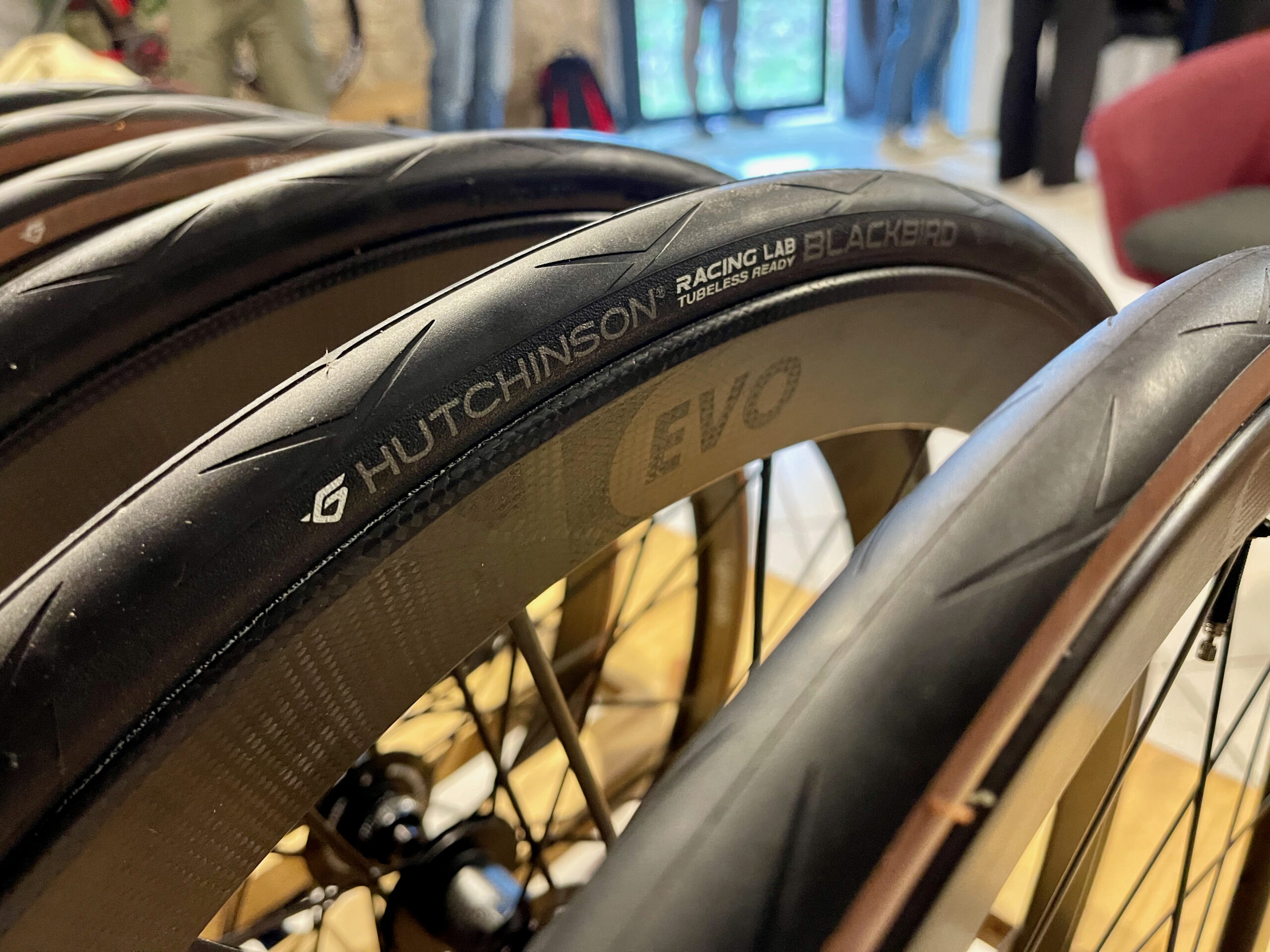
The Hutchinson Blackbird is the company’s first Racing Lab road tire, designed explicitly for performance. The new design ushers in an all-new casing concept that reduces rolling resistance, an all-new tread compound, and some larger sizes.
What is the Hutchinson Blackbird?
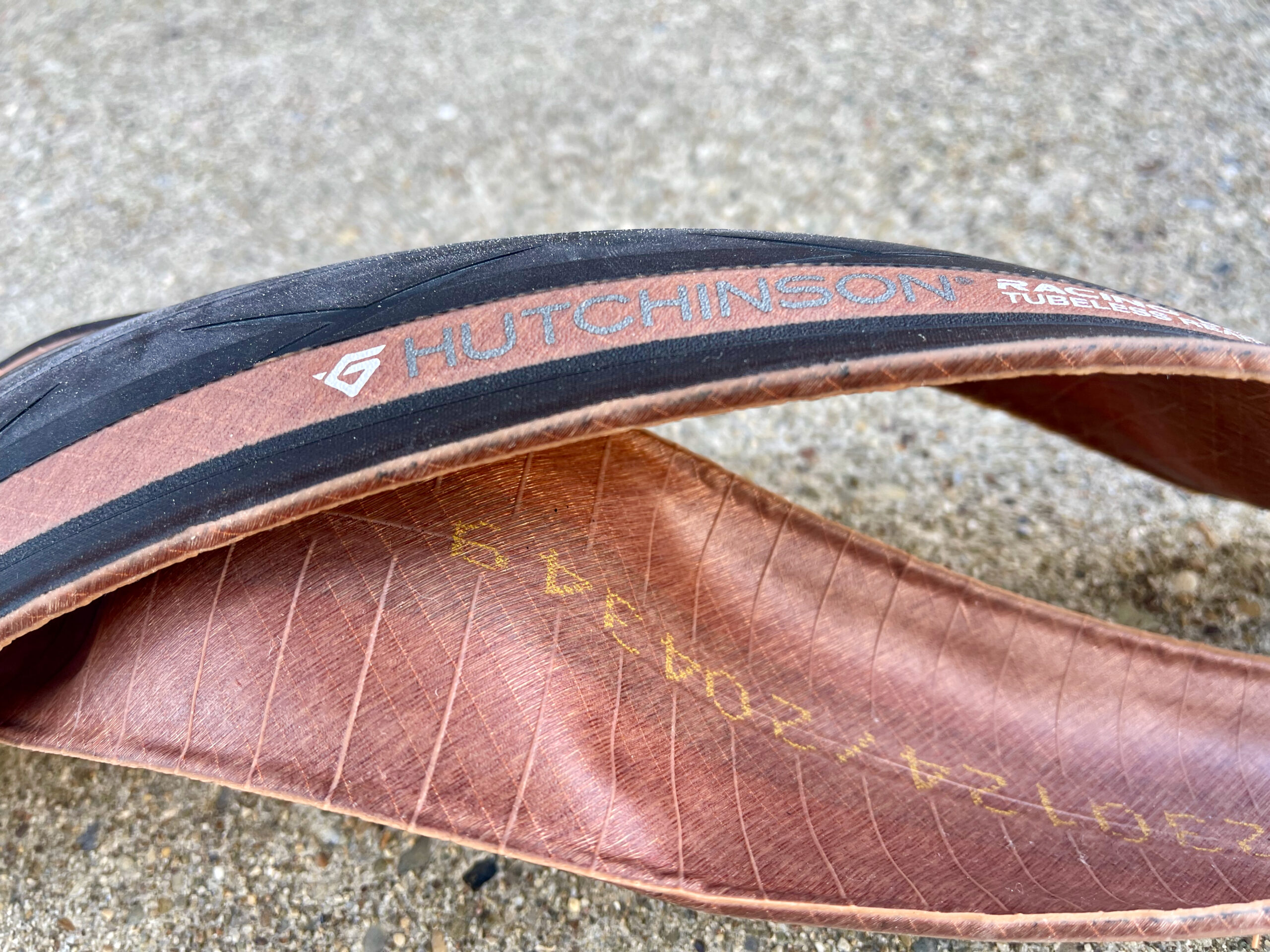
The Blackbird represents four years of research and development at Hutchinson. The design team’s goal was to increase rolling efficiency, enhance the tread compound, and make the tire lighter overall.
Simple right?
They did accomplished their goals however. And created a high-speed, well-rounded performance road tire, hand-made in France.
How much Faster?
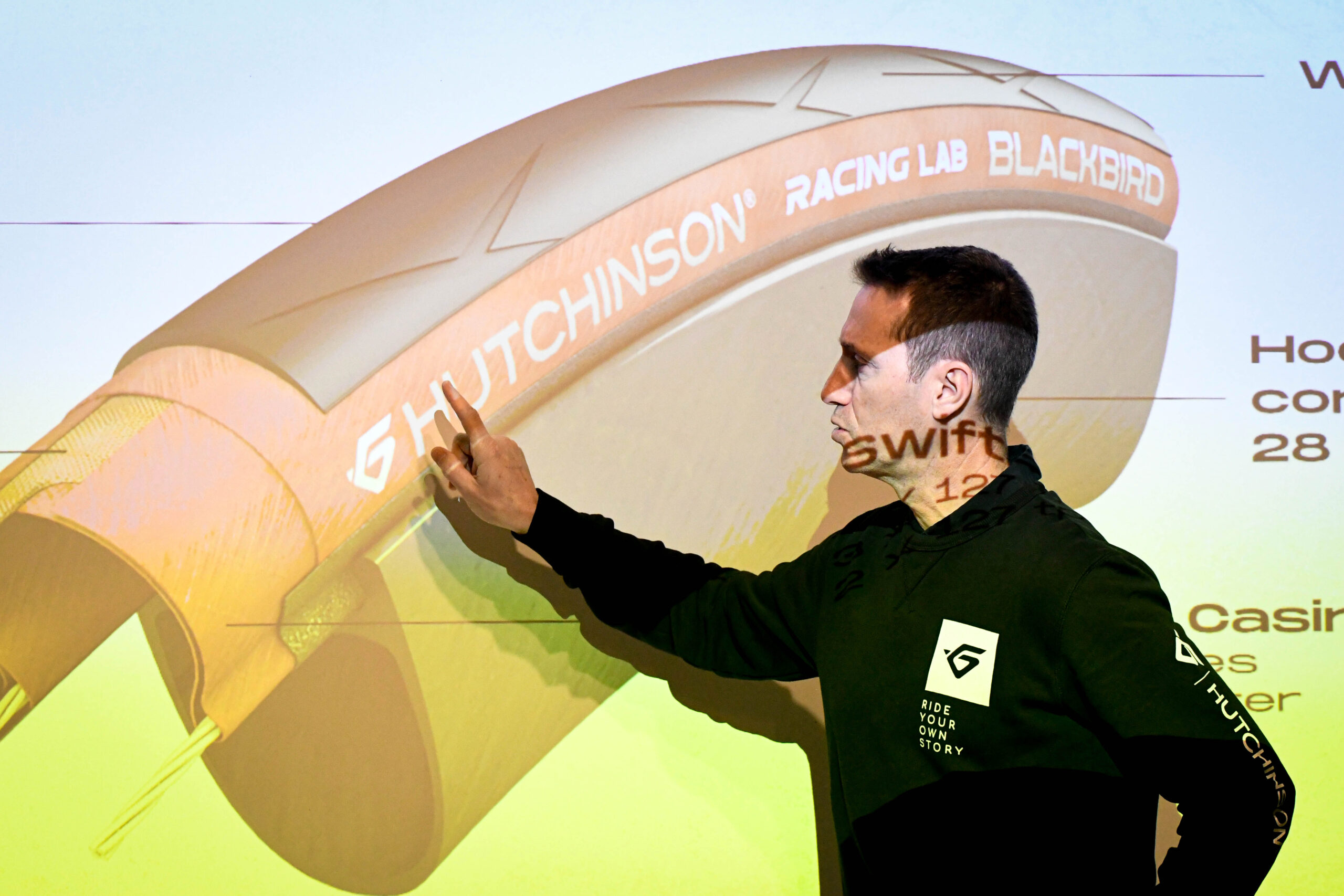
The new Blackbird improves rolling resistance by 10% compared to the previous generation, Fusion 5. But, at the same time, with an increased, class-leading lifespan of over 2,500 miles (4,000km) of real-world riding.
Designed Around Modern Wheels

Road rims are getting wider and (for better or worse) hookless. The new Blackbird was created with that in mind and to thrive in such conditions. The tire tread surface on the Blackbird is 15% wider than that of previous generations of Hutchinson road tires – of the same casing size. This, combined with the more flexible SwiftEasy casing, means the tire’s contact patch with the road is more comprehensive than long, enabling aggressive cornering and reduced rolling resistance.
Hutchinson Racing Lab
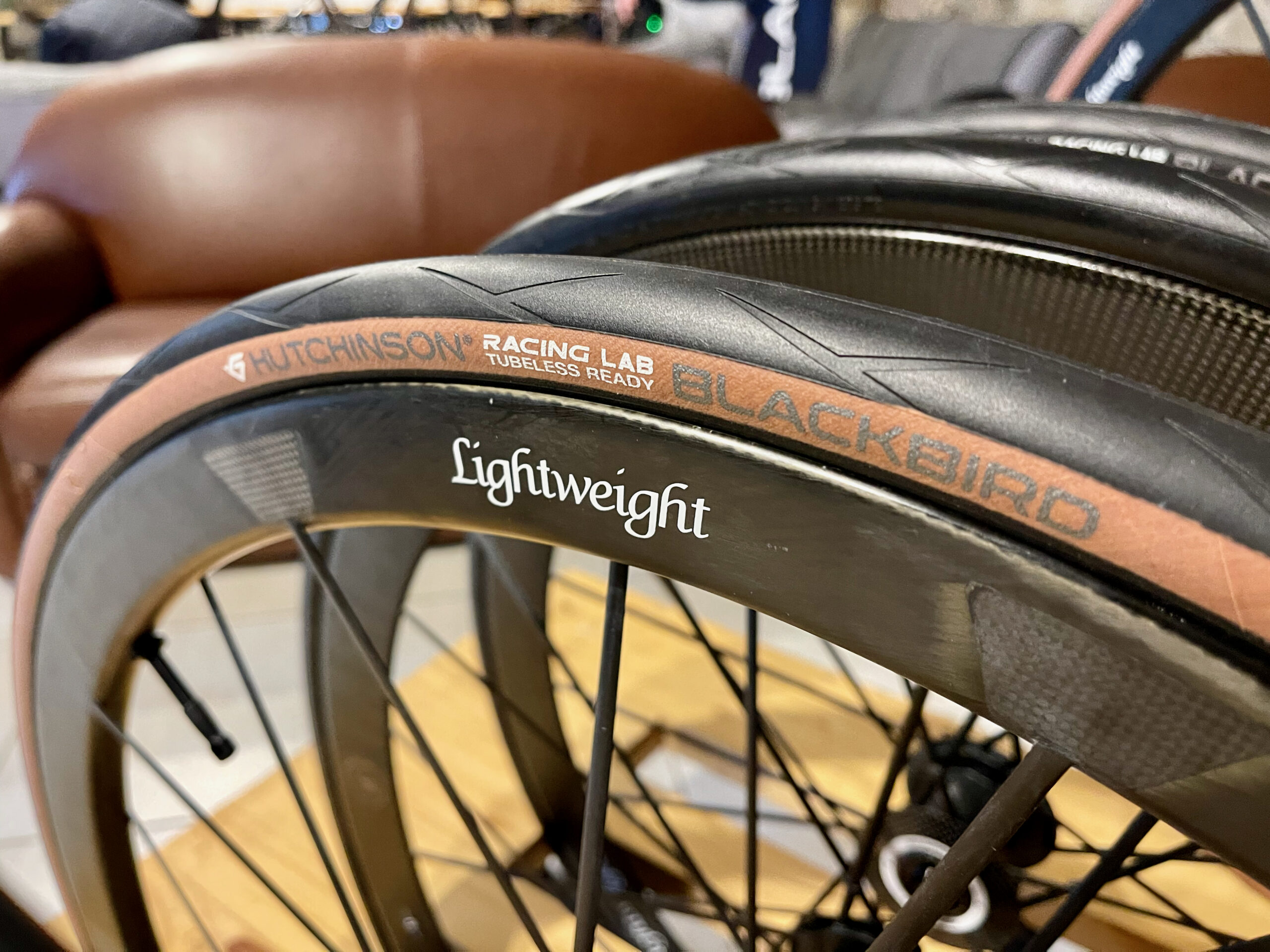
The Racing Lab name is reserved for Hutchinson’s fastest and most performance-driven designs.
You might be familiar with some of the Racing Lab mountain bike or even gravel designs – the Skeleton being a personal favorite. These designs come from direct work with Hutchinson-sponsored professional cycling teams and athletes. The end product is a tire that’s for racing and results.
Introducing an all-new ‘SwiftEasy‘ Casing
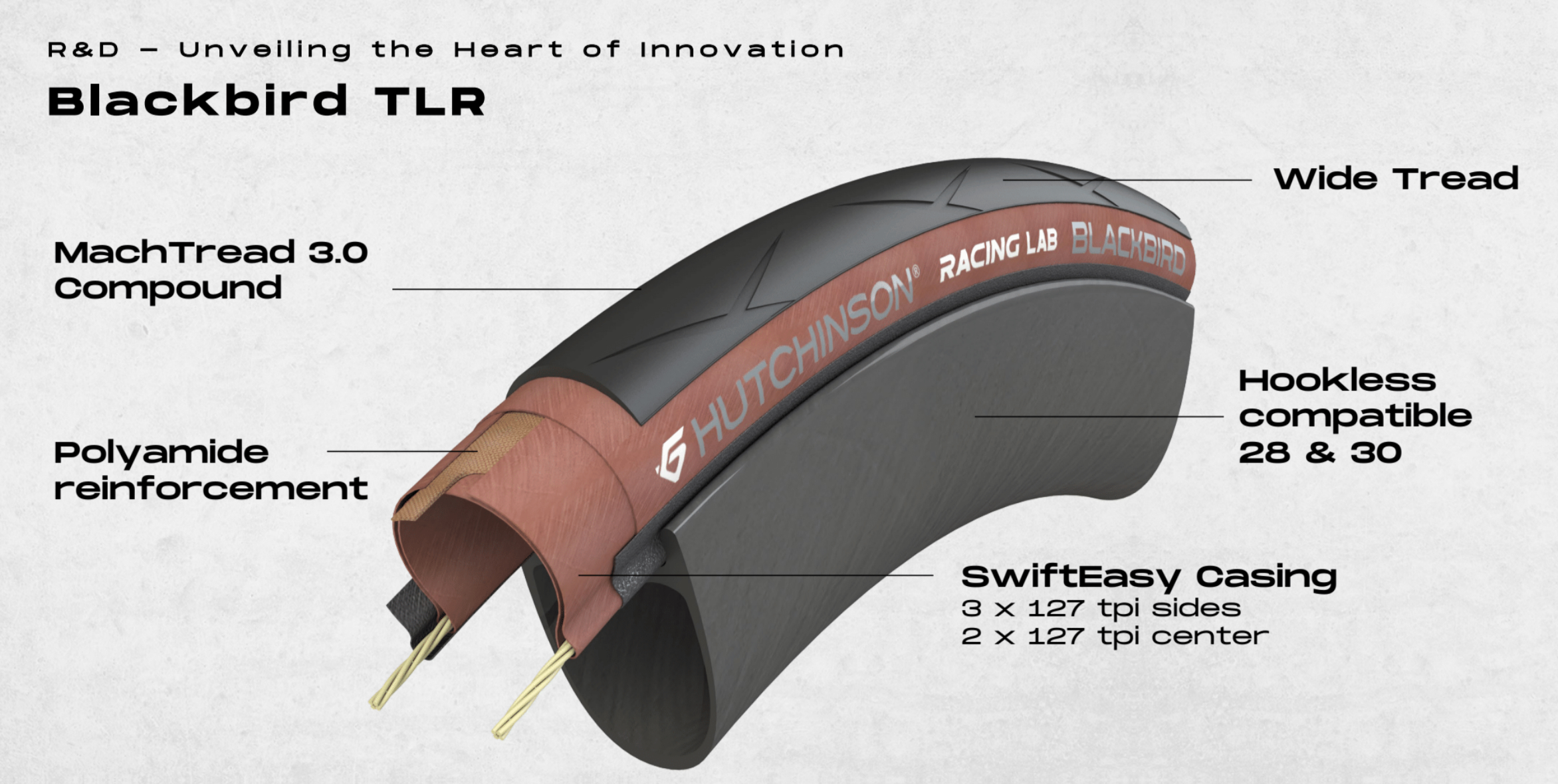
The crux of the decreased rolling resistance is Hutchinson’s new casing design called SwiftEasy.
This new construction sees the tire’s casing wrapped around the bead and then bonded directly to a central polyamide puncture protection strip in the middle. This process differs from the ‘normal’ protocol of overlapping the layers. For the final step, a casing layer runs from bead to bead to reduce air leakage and a slight bead chafer to reduce punctures.
Why is this process better?
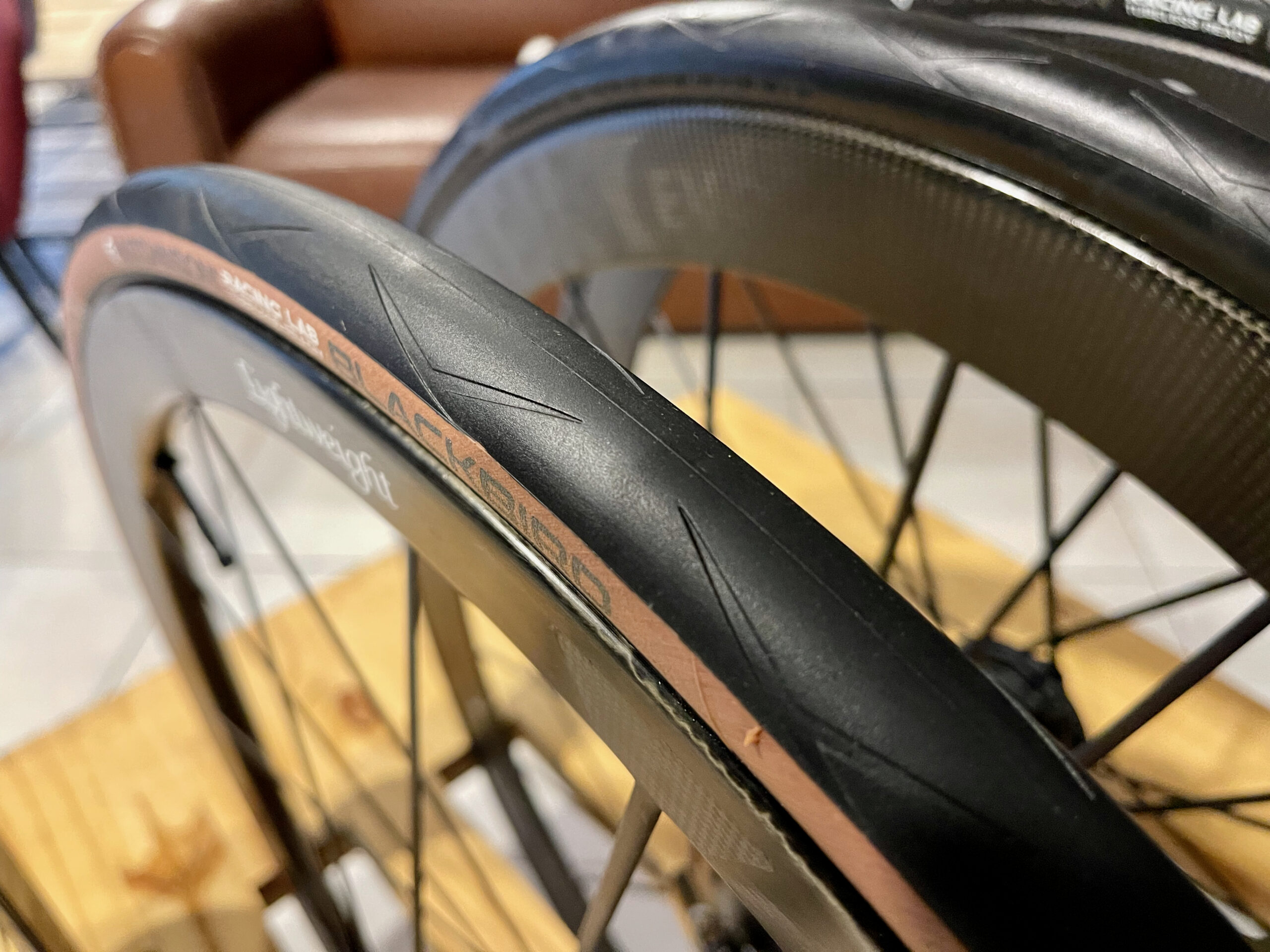
The SwiftEasy casing offers a flexible point of contact with the road, decreasing rolling-resistance and giving the tire a better, more supple overall ride feel. The use of just two layers of 127tpi casing fabric also reduces weight.
The result is a super-fast, comfortable, and lightweight tire. The tubeless version of the Blackbird in size 28mm weighs in at a competitive 286g.
Mach Tread 3.0
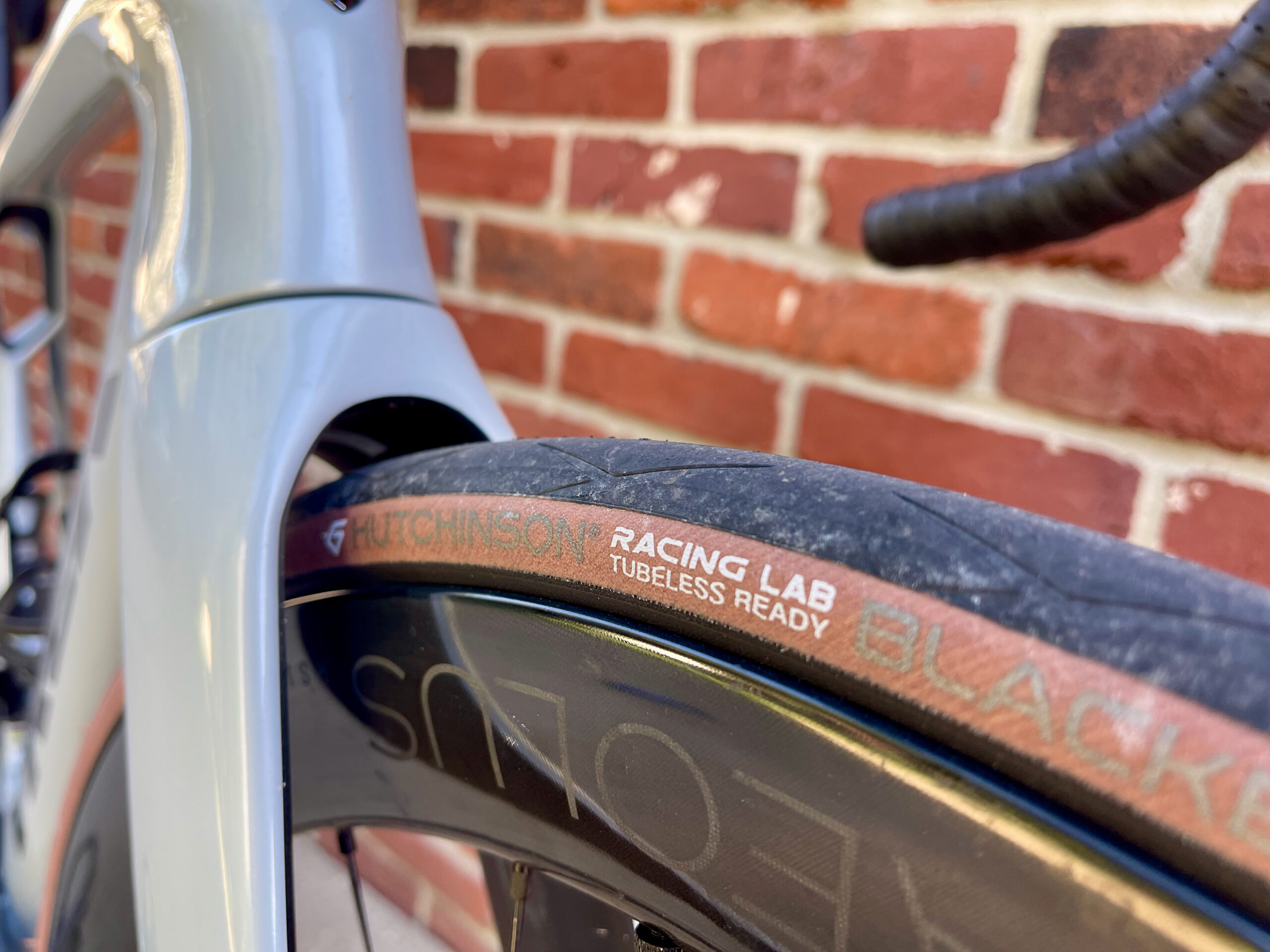
Another defining piece of the Blackbird puzzle is this Mach Tread 3.0 rubber. The Hutchinson team calls it “the fastest and most efficient tread compound that Hutchinson has ever developed.”
How different is it from the compound on the Fusion 5?
Well, it’s different. The compound is an entirely new formulation with low rolling resistance and high rebound that claims an increased energy return by 25% when it comes into contact with the road.
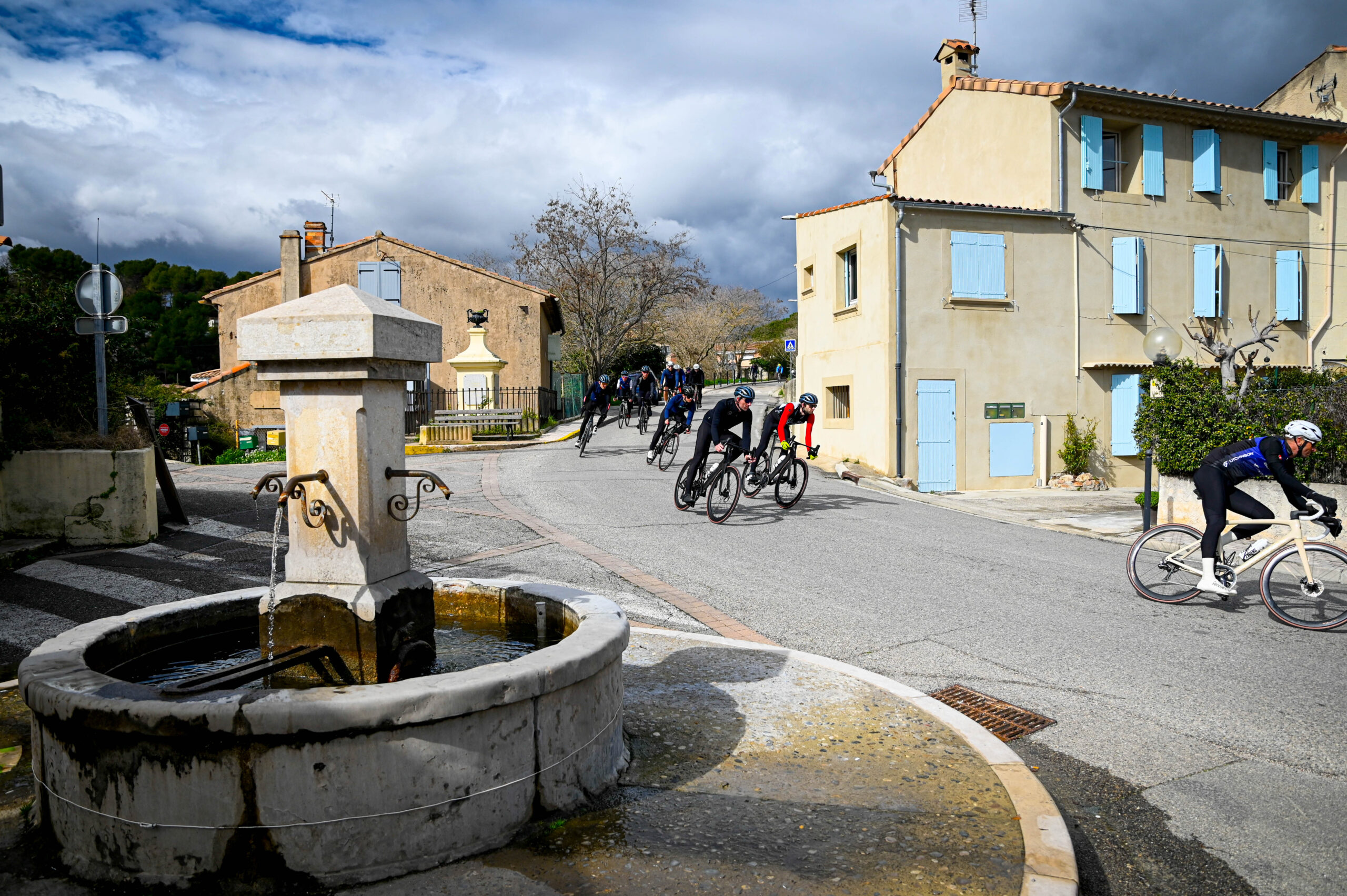
Mach Tread 3.0 is also 10% harder than the previous 11Storm compound (the same used on Dugast Tires until 2024). This means the tire is more resistant to tearing if cut by road debris.
Blackbird Tech Details

- New SwiftEasy Casing
- MachTread 3.0 Compound
- 15% Wider Tread
- Tubeless Ready Construction (also available in a tubed version)
- Hookless Compatible, 700×28 and 700×30 sizes available
- Polyamide Interply Reinforcement
- Color options: All Black and Tan Wall colorways
- Sizes: 26mm, 28mm, and 30mm, weighing 275g, 286g* (actual weight) & 310g, respectively
- Hookless compatible only on the 28 & 30mm versions
- Price: Tubeless $75 / 70€. and Tube-type $54 / 50€
Hutchinson Blackbird Review
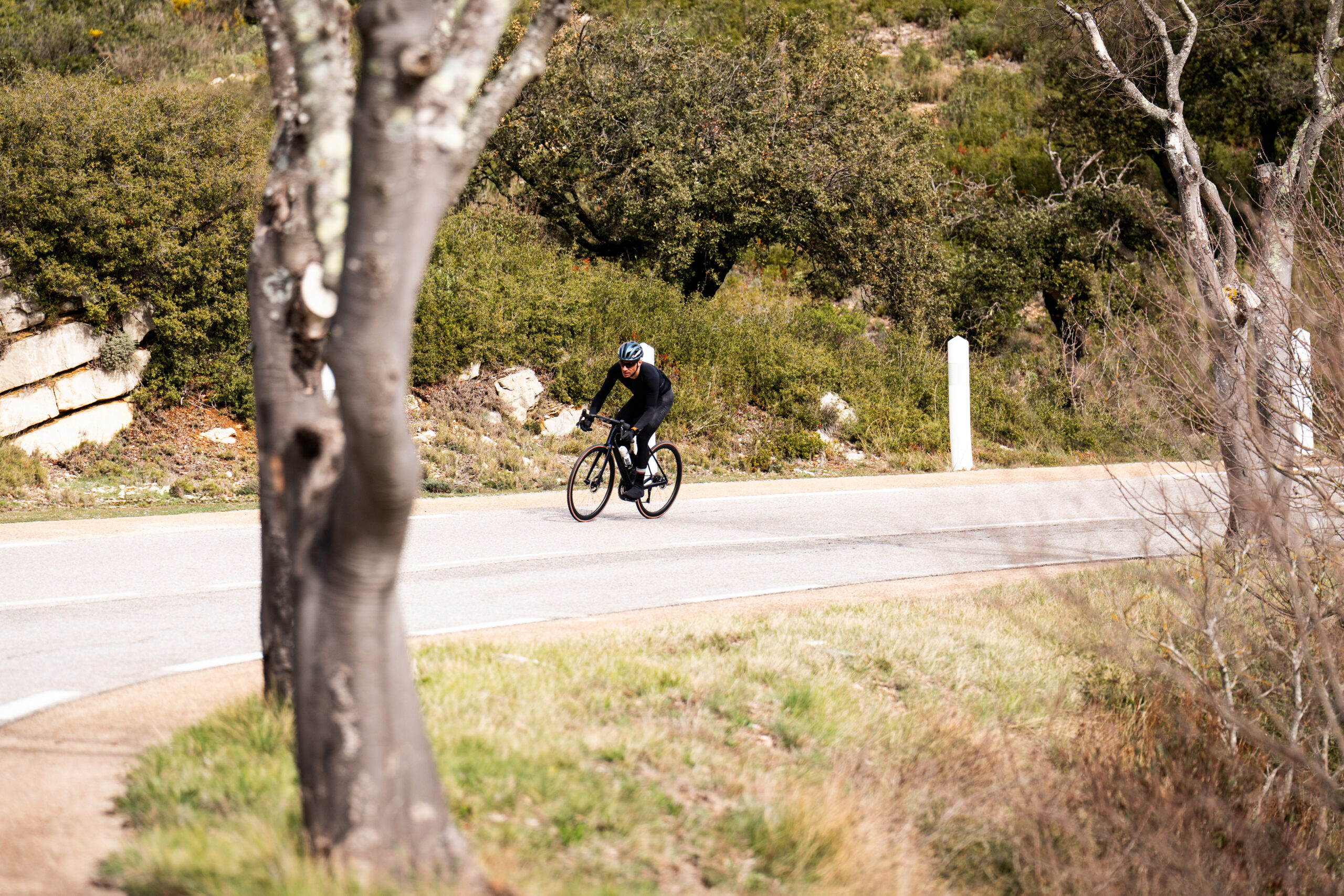
I’m very familiar with Hutchinson road tires; I raced the Fusion 2s on Stans No Tubes road rims for years as my go-to race setup. I loved the feel of the tubeless tires. They were groundbreaking (in 2006). And the ride felt very different from tubed tires, especially the low pressures you could get away with. So when I heard that Hutchinson was going for a higher-end model of tubeless road tire, I was very excited.
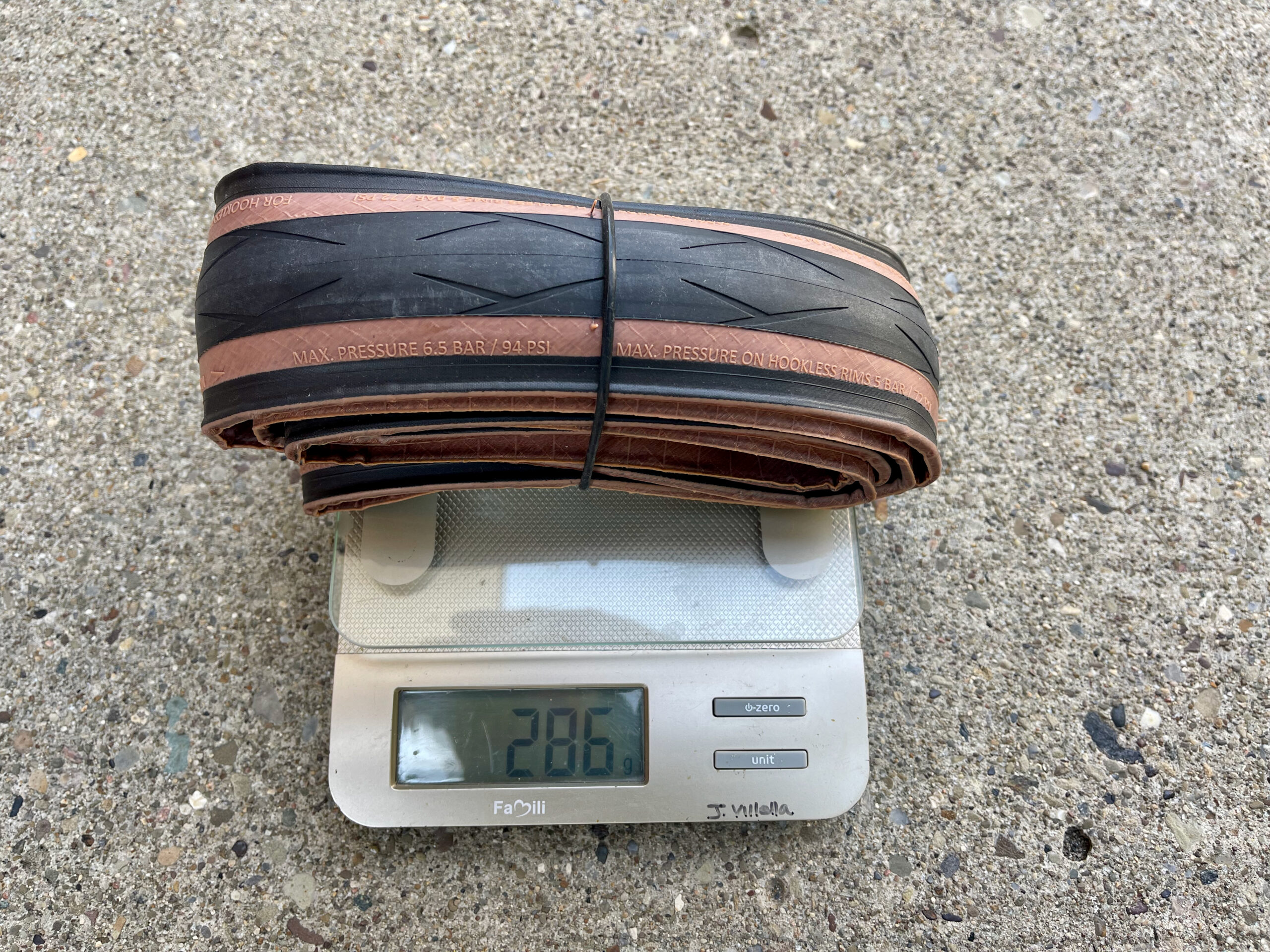
The Blackbird is a slight departure from what I remember of the Fusion tires but in a good way.
Out of the box, the tires feel more pliable and supple than the older road models. The construction is flawless, and the molding is very clean.
The tread (not only the compound) is different, too. The design team took the slight ‘V’ from the Fusion, doubled-it and flipped-it, creating an “X.” They also eliminated the slight dimples from the shoulder, opting for a slick profile. As a matter of personal preference, the two-tone tan/black look of the Blackbird is much more appealing than the full black version of the Fusions.
Installation
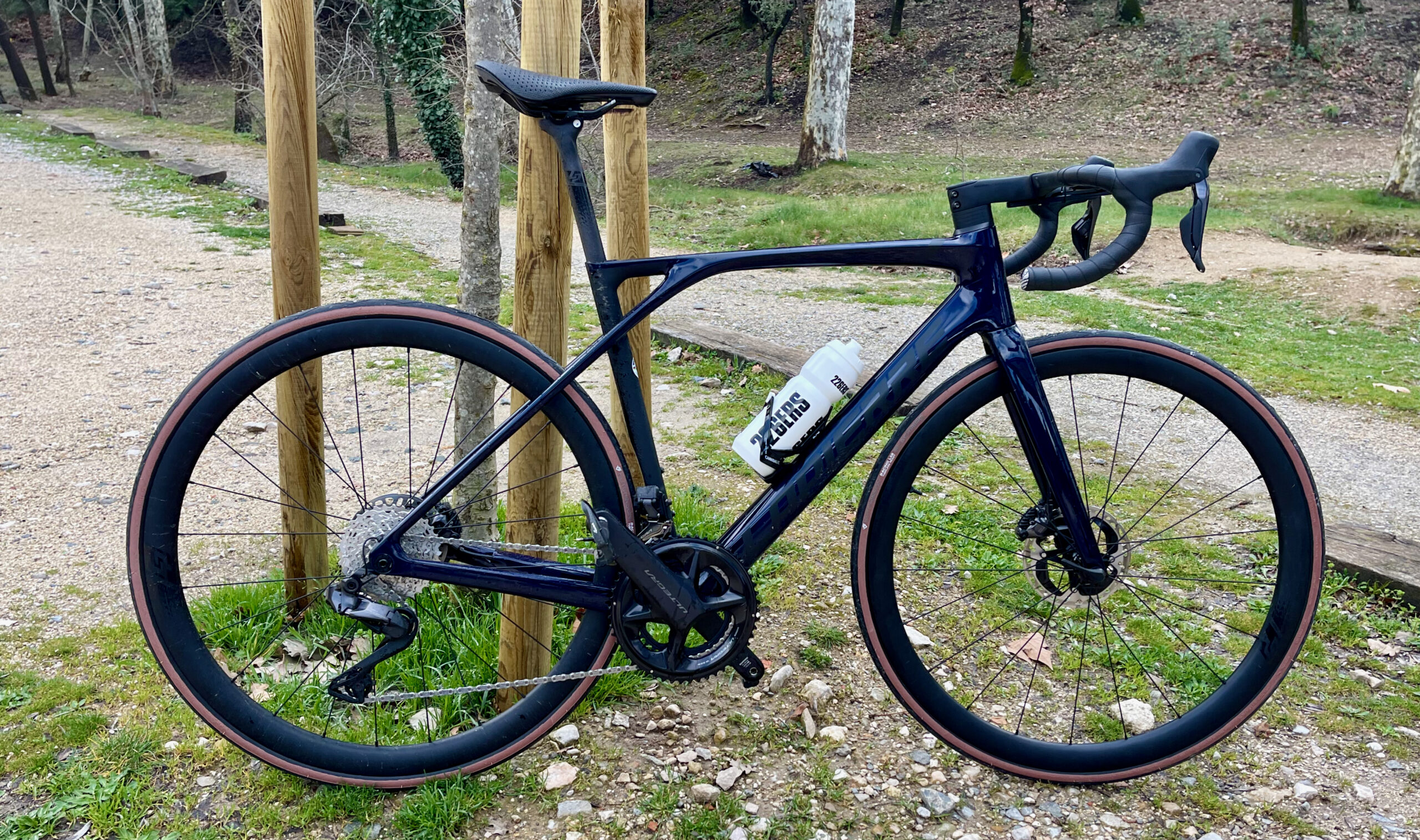
If you installed the old Hutchinson Fusion 2 tubeless tires on the tubeless specific Shimano wheels back in the day, you still have some scars from broken tire levers. The Blackbird tires couldn’t be more different. The installation was effortless enough that it didn’t require tire levers (at least on my chosen wheels) and was inflated with a floor pump. They did lose air slightly (5psi) immediately after my initial setup, but they have been leakproof since.
I chose the Hutchinson Blackbirds in 28mm tubeless for my review rides. Most of my rides were at 74psi front and 75psi rear, but later went down in pressure to 70psi front and 72psi rear as a nice combo of cushion and confidence. At 160lbs for myself, that felt right on the money for most of my riding, especially with the tar & chip roads in my town.
Ride Impressions
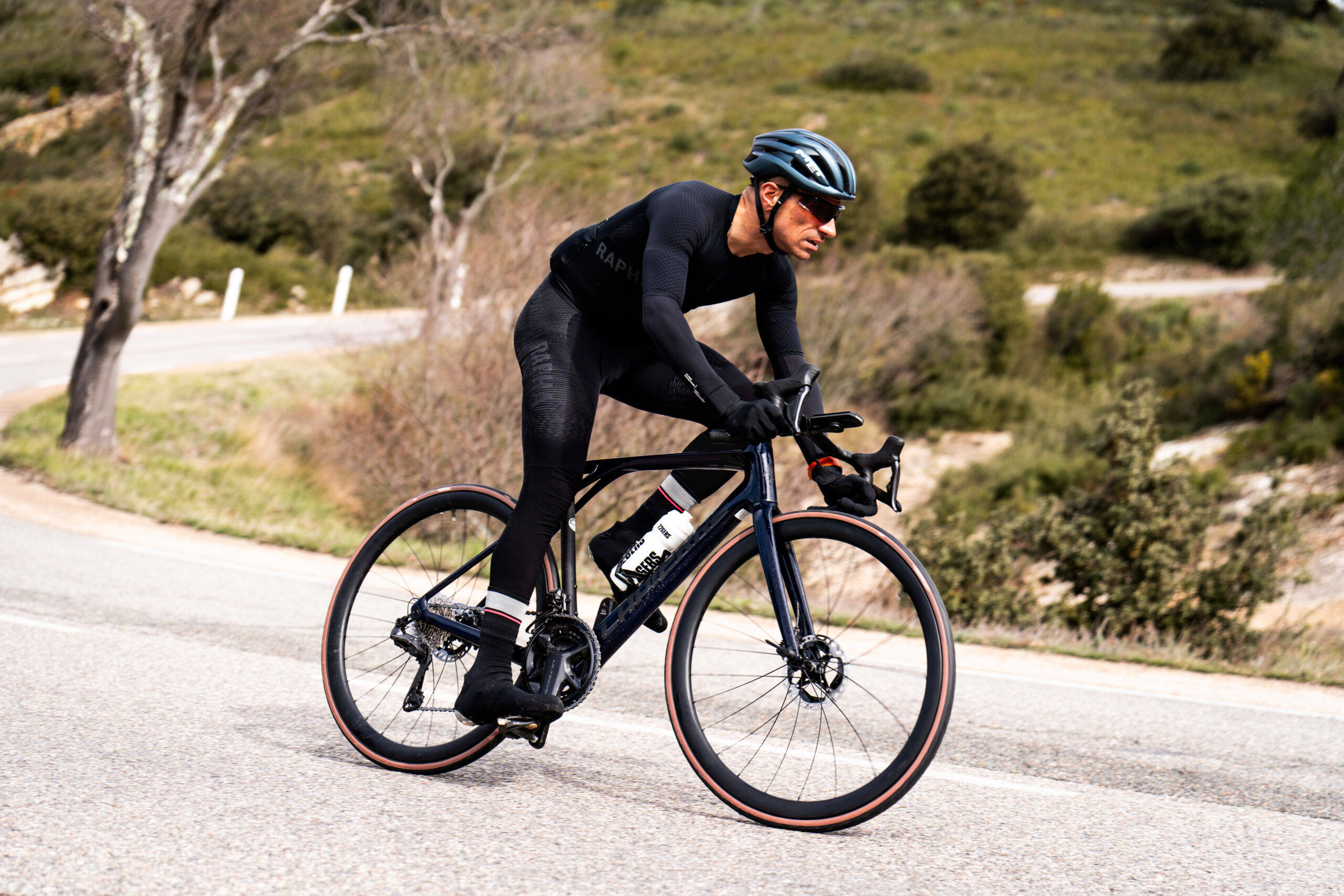
I enjoyed my first rides on the Blackbirds with the Hutchinson crew in the south of France. The winding roads with technical descents were perfect for testing the Blackbirds’ cornering feel and comfort.
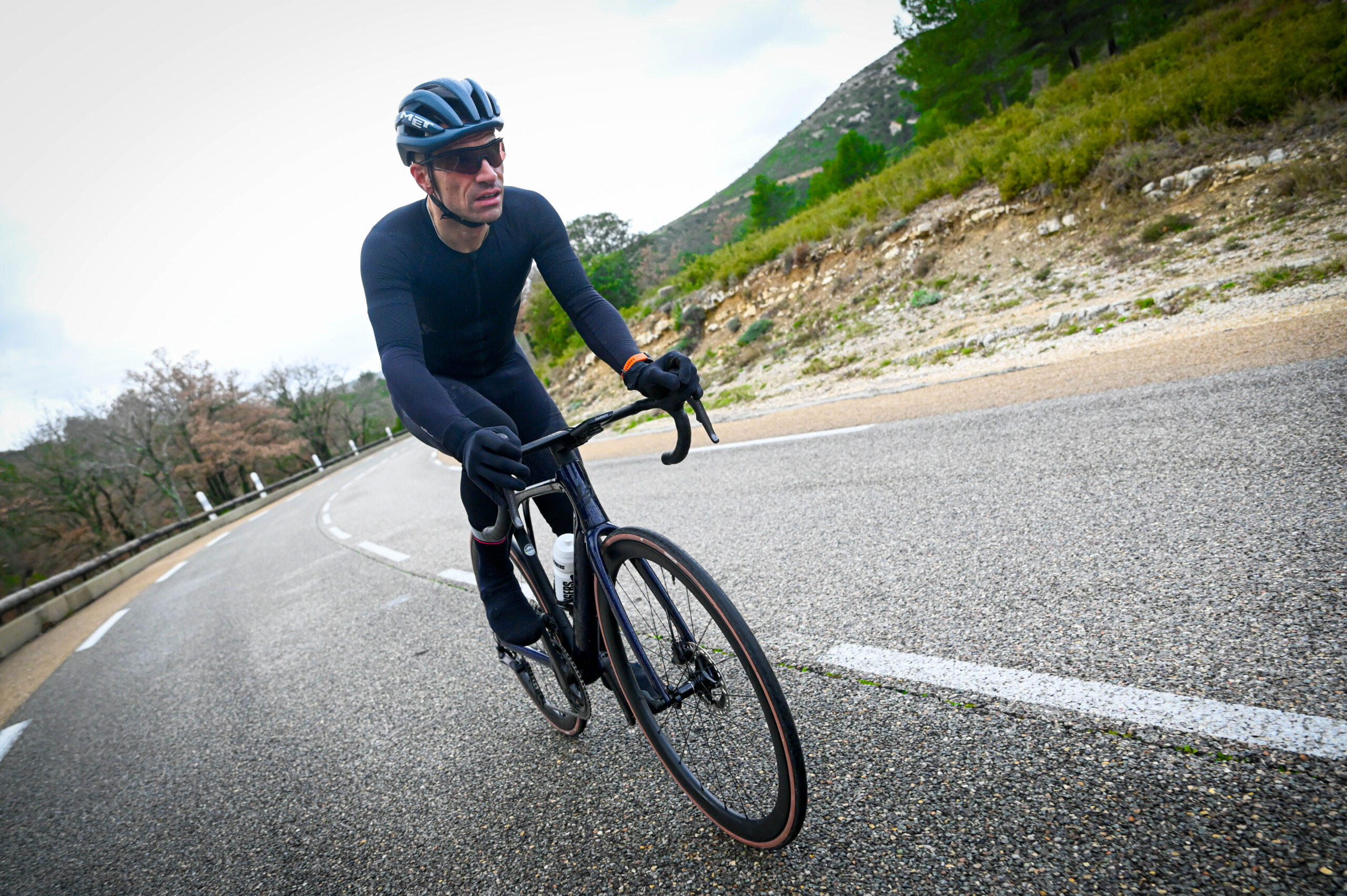
The first notable sensation was comfort.
They reminded me of the Fusions, but only in that “these feel nice” way. As the ride unfolded, I became more confident in the Blackbird, especially leaning into the turns. The first word that came to mind was ‘sticky.’ I could push the tires in the corners and be confident I had the grip.
Back home on my wheels and my terrain
When I arrived home, I installed the Blackbirds on my Bontrager Aeolus RSL 51 wheels. The 23mm internal rim width worked well with the 28mm-sized Blackbirds, which plumped to an excellent shape, not bulbous.
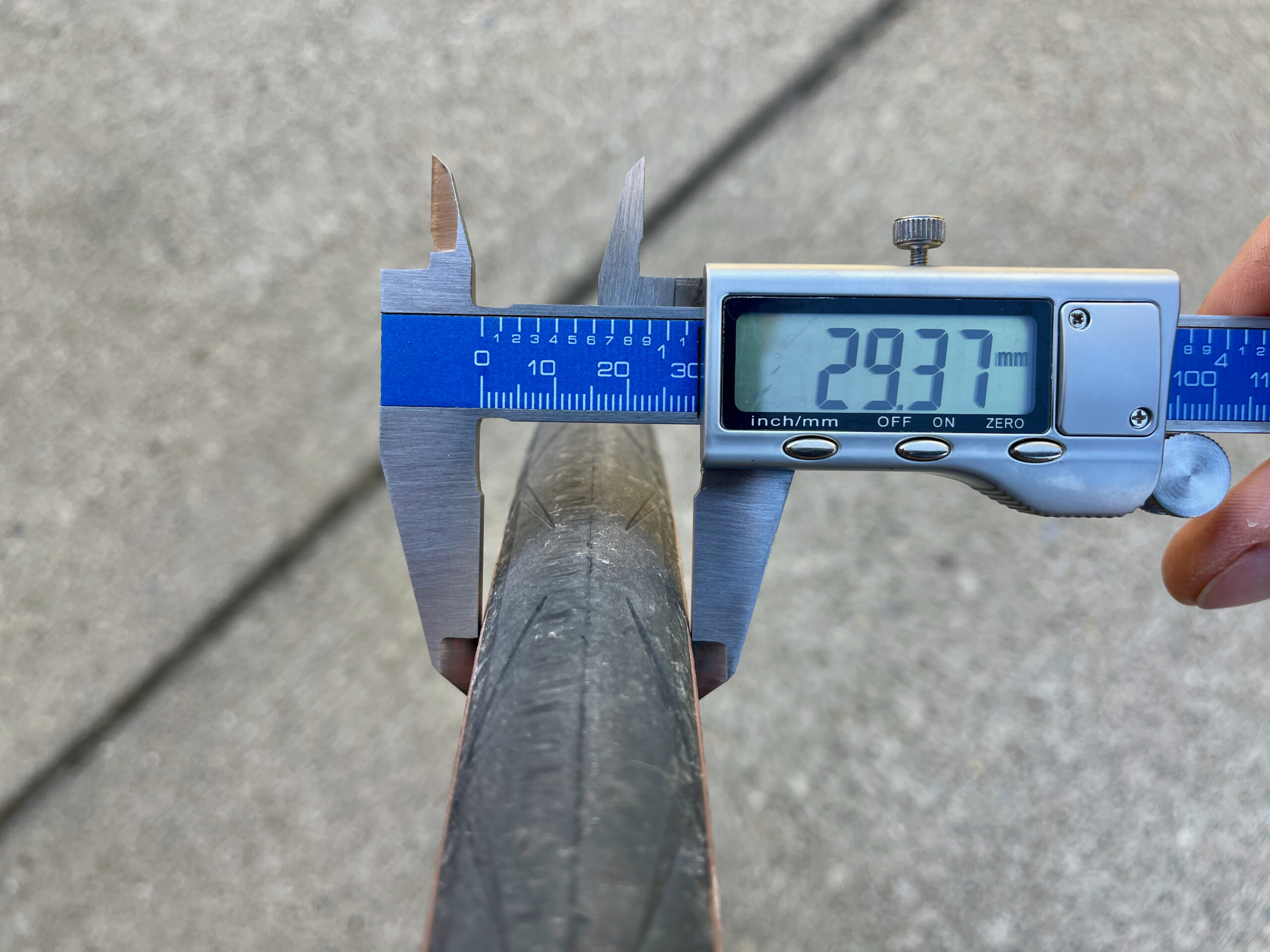
I use the Bontrager Aeolus RSL 51 wheels for nearly all my road rides (I love them), so I’m familiar with them. On my home roads, the first thing again I noticed was the comfort of the tires.
The roads around my area are in “winter mode” and are not in great shape. The extra suppleness of the Blackbird casing, combined with the lower pressure, rounded out the edges of my rough roads. As for rolling resistance, I never felt wanting on the Blackbirds; they always ‘felt fast’, but I have no actual data to back that one up. I believe confidence is fast, and the Blackbirds inspire confidence (at least in me) in the corners of sweeping descents.
Confidence in Grip

In my many review rides around my surrounding area, I’ve encountered all types of spring road conditions, including tar & chip, rain, ice, and random glass. I found the Blackbirds Mach 3.0 compound to be excellent in all conditions. I would say I ‘pushed it’ on the ice, but what looked like a wet road turned out to be black ice, and yet I managed to stay upright.
The cornering and feel in the rain is that of a quite refined tire. The tread doesn’t look like much, but it offers a good bit of traction and water displacement when put to the test.

I’ve yet to have a flat through various terrain and adverse conditions. (I can’t believe I said that out loud.) I noticed that the tread on the Blackbird was starting to wear slightly quicker than I had imagined after about 300 miles. That could also be from the gnarly nature of the roads this time of year on the east coast.
For the $75 tire price tag, the Hutchinson Blackbird is a great race/performance tire option. I recommend it for riders looking for comfort and confidence in their ride. Stay tuned for a long-term review as road and crit racing season unfolds.